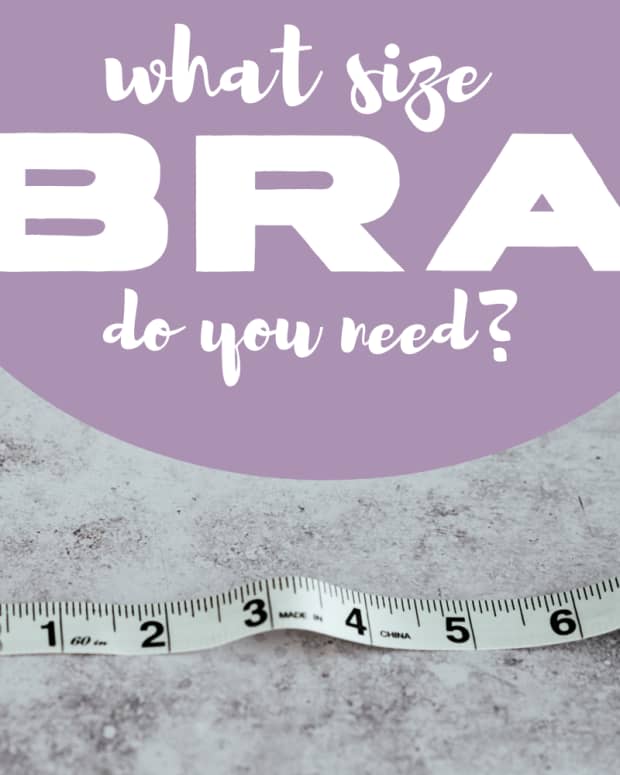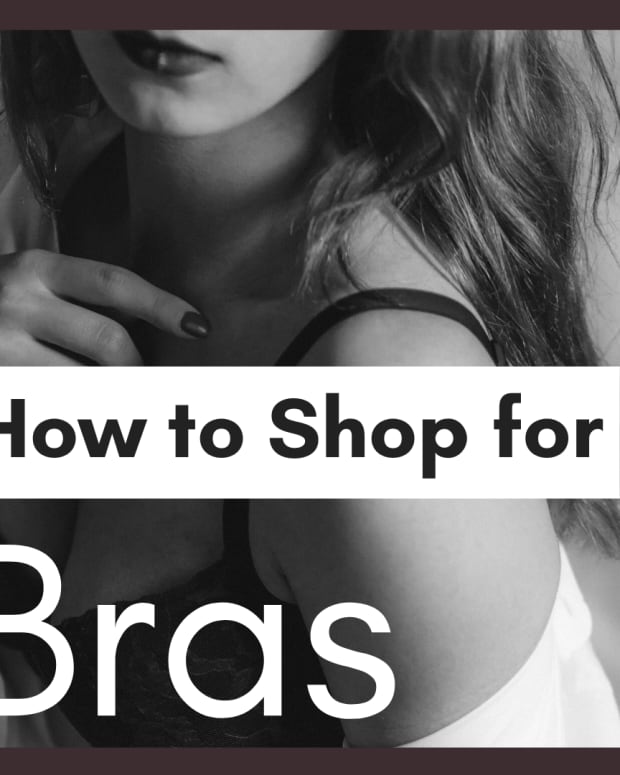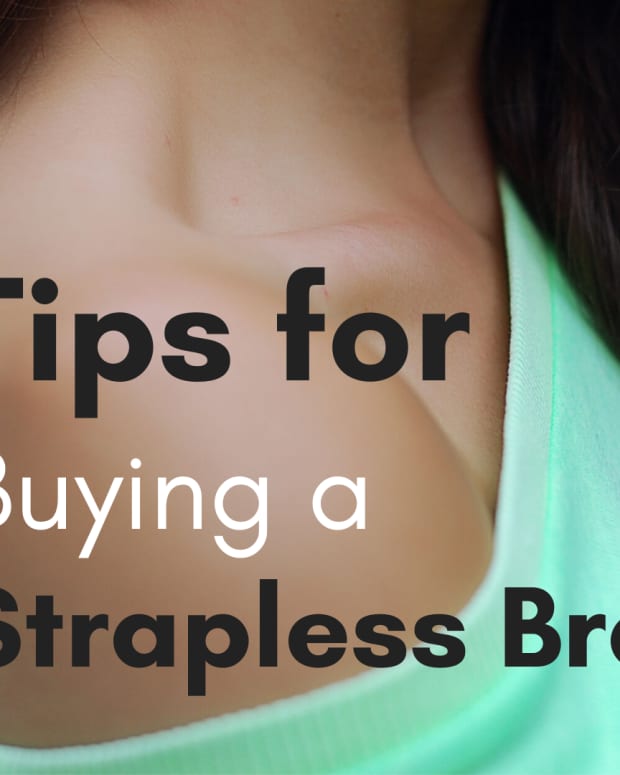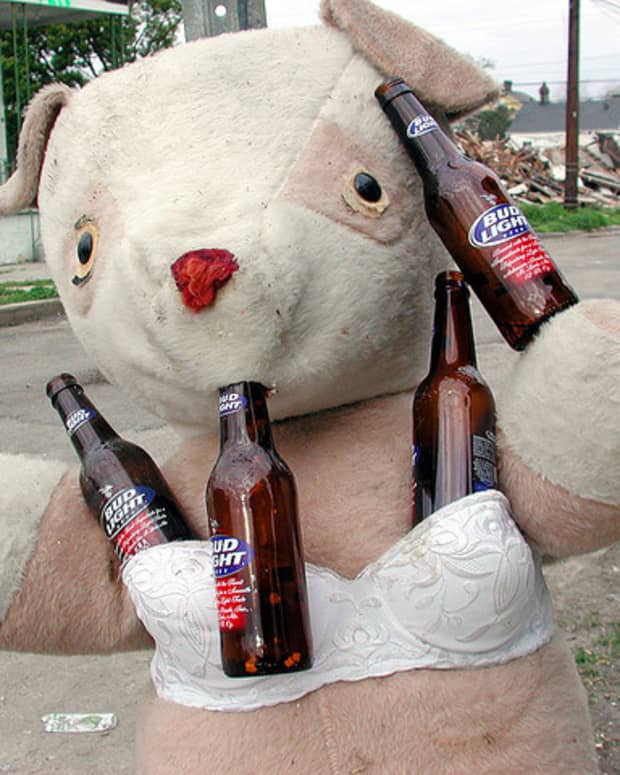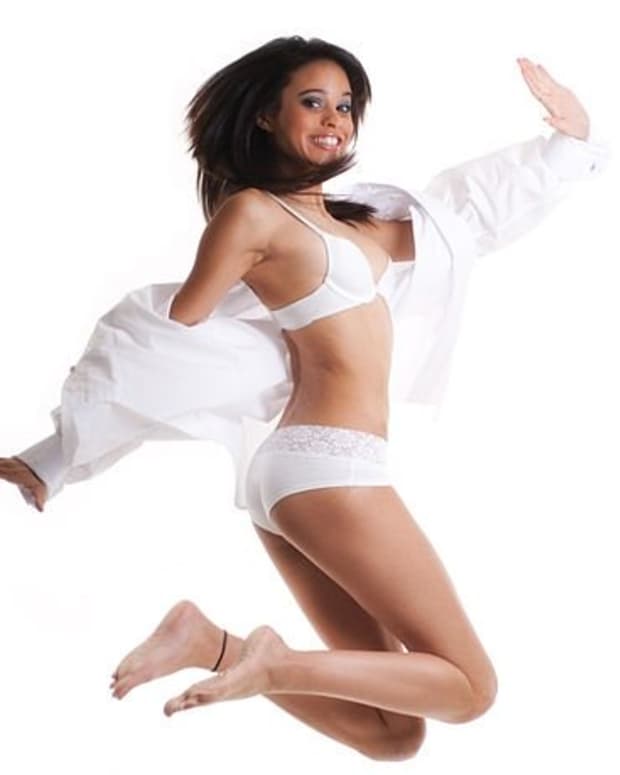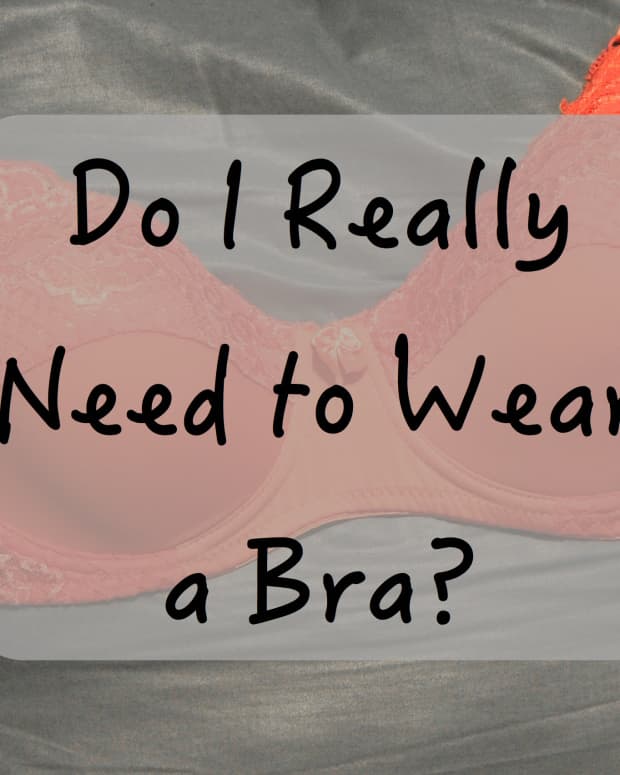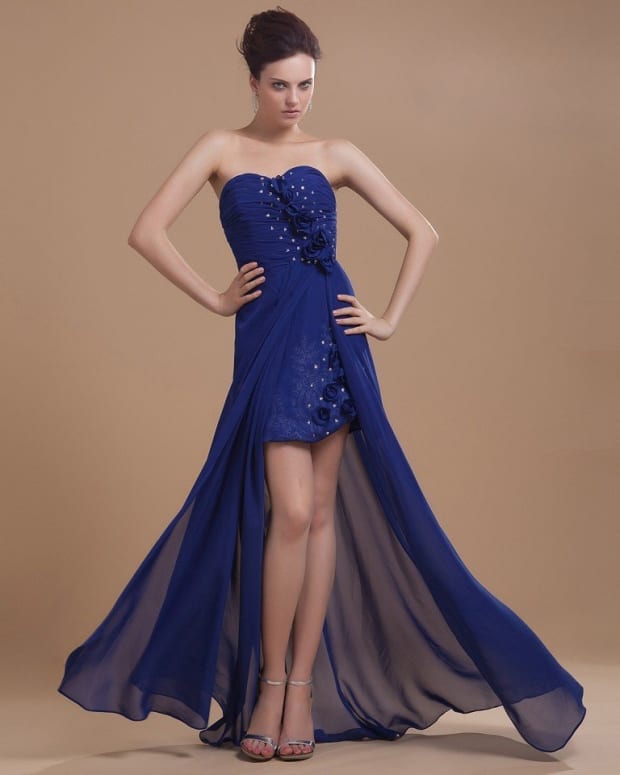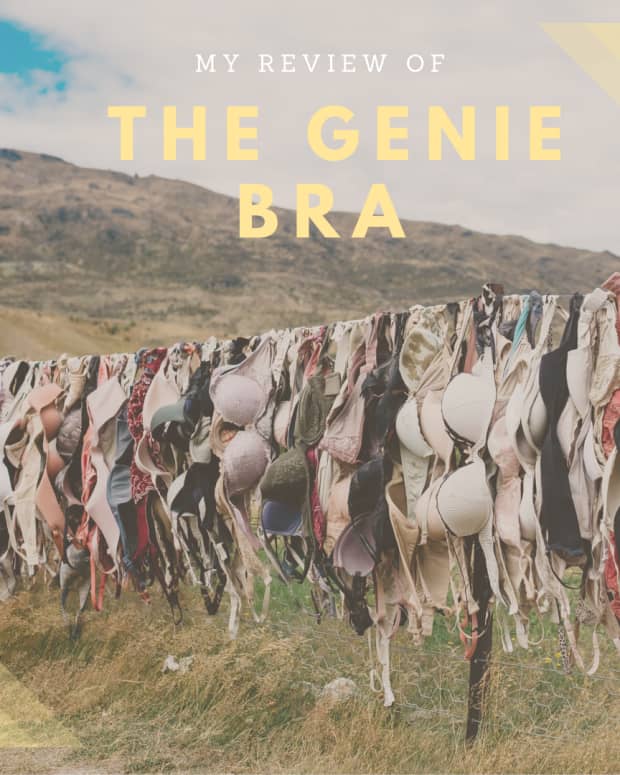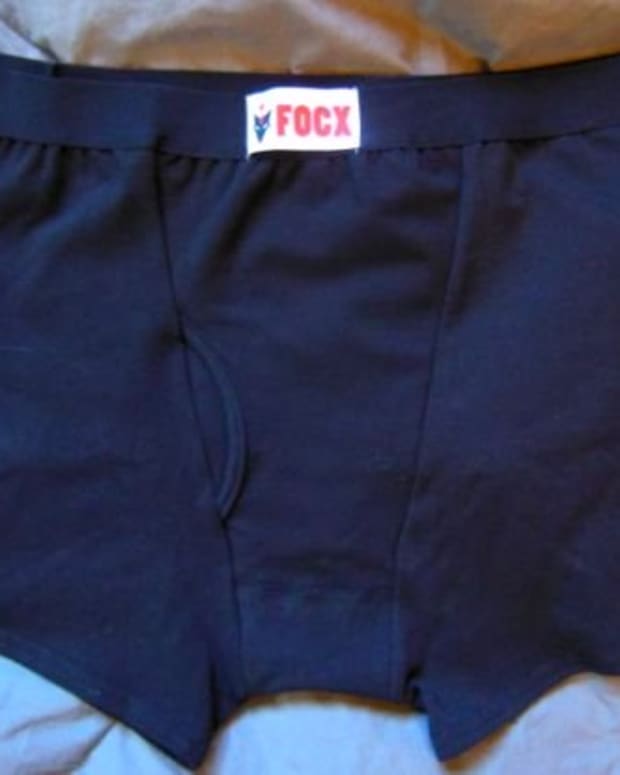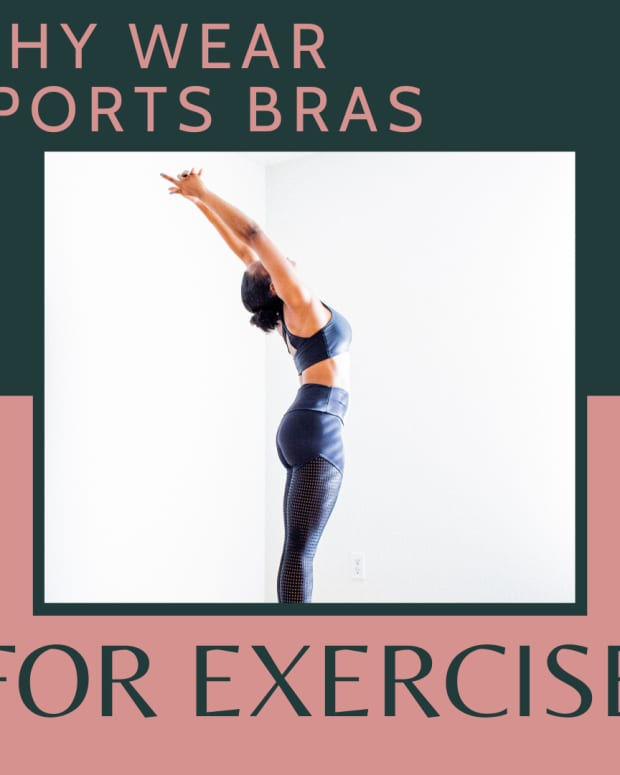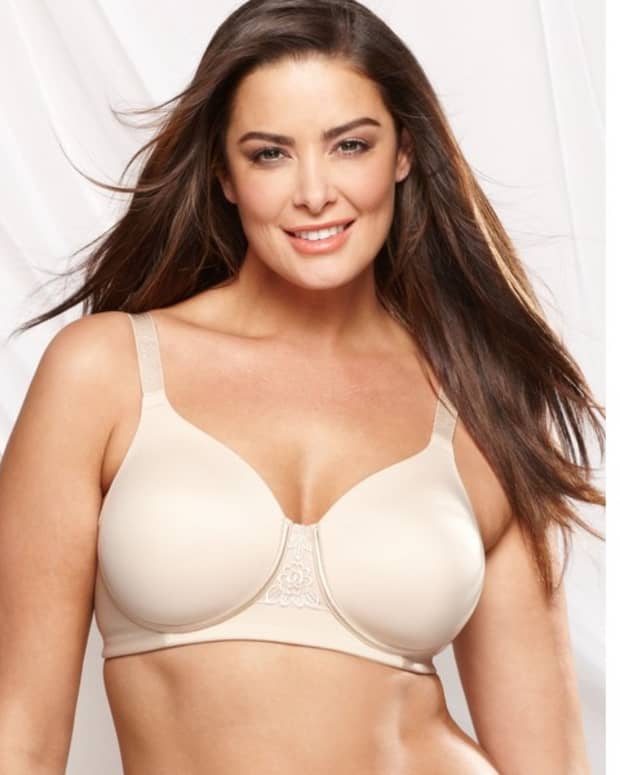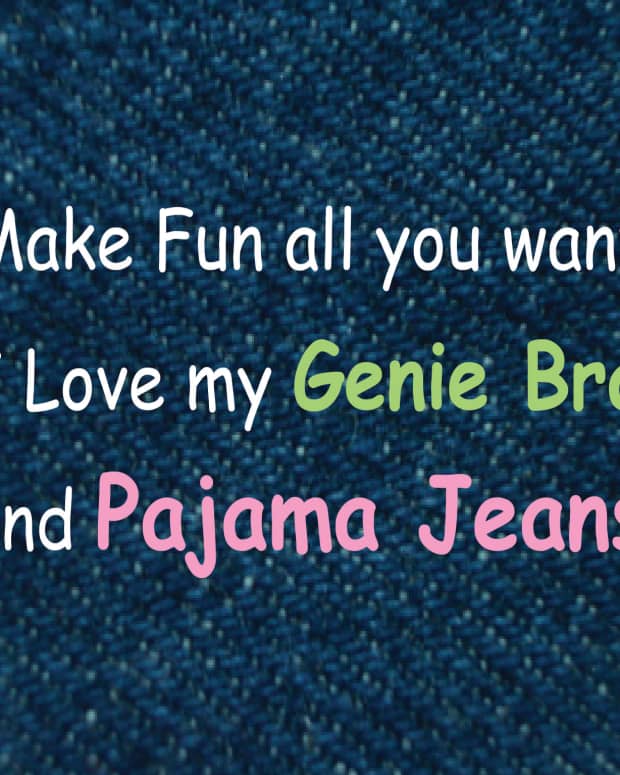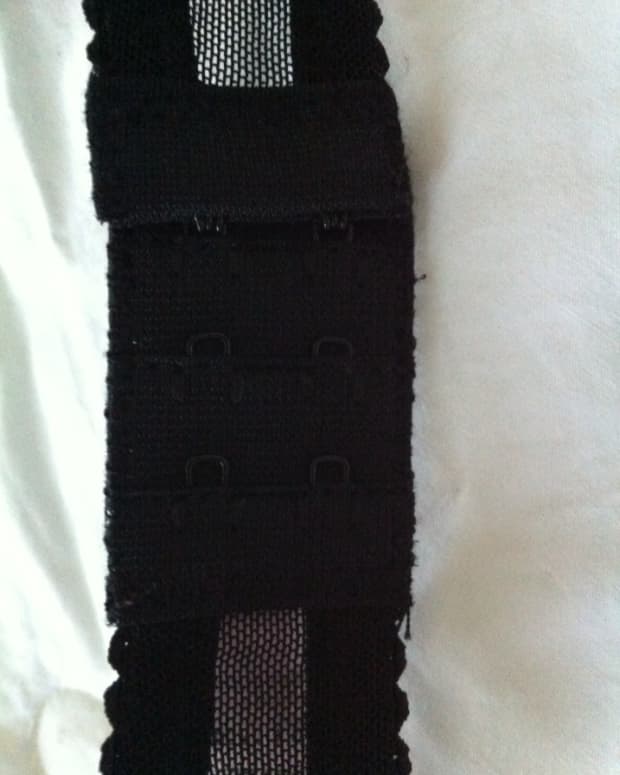How to Find Your Real Bra Size
I'm a writer, traveler, and beauty fanatic. I love writing fashion and beauty reviews and how-tos.
Do your bras:
- Ride up in the back?
- Have straps that slip off or dig into your shoulders?
- Chafe underneath your arms or breasts?
- Pull away from your chests at the gore (the piece of fabric between your breasts)?
- Poke you with underwires?
- Give you a shape you don't like?
- Fail to help prevent backaches, headaches, or shoulder pain?
- Gape or wrinkle in the cups?
- Cut into the top of your breasts?
- Leave what look like rolls of fat underneath your band, under your arms, on your back, or on top of your breasts?
If you said yes to any of these, you might be one of the 80% of women who isn't wearing her ideal bra size. A bra that fits properly is one of the simplest and healthiest (yes, healthiest!) ways to look and feel better in your clothes, and the right bra can be the difference between living with backaches and chafing and living confidently and comfortably.
What Cup Size Means
Myth: Cup size = breast size. A is tiny, DD is huge, and anything above that is fake!
It's easy to see where this myth comes from. Most major bra retailers, like Victoria's secret, carry DD or DDD as their largest cup size, so it stands to reason that just about everyone should be at or below that cup size, right? And mostly below, because DD is huge.
Truth: Cup size is meaningless without band size.
The cup letter signifies the number of inches between the band size (right under the breasts, where the bra band hits) and the breast size. A "huge" DD just means there's a five-inch difference between a tight measurement under the breasts and a comfortably not-too-loose, not-too-tight measurement around the fullest part of the breast. That doesn't mean each breast sticks out five inches from the chest. It means the total circumference of the part of your ribcage that includes your breasts is five inches larger than the part of your ribcage that does not include your breasts. That's not such a big difference!
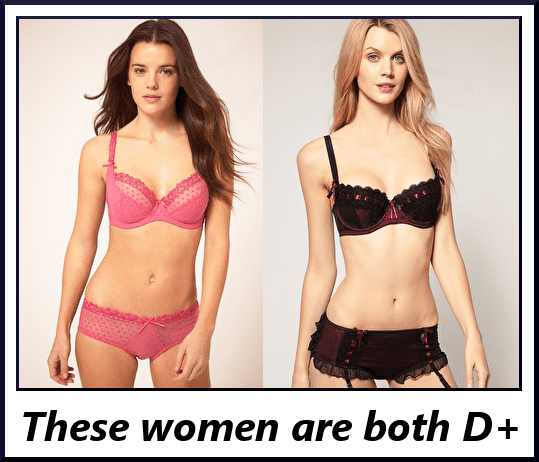
The differences between these women's underbust measurements (band size) and bust measurements are about 5 inches, which puts them in a DD cup.
So as the band size increases, the size of the cup does as well to accommodate the wider band. (Breasts that are five inches bigger than a 36" ribcage are going to be a lot bigger than breasts that are five inches bigger than a 30" ribcage, right?) So the cups on a 36DD bra are not the same size as the cups on a 30DD; they are, in fact, three sizes larger. The cups of a 36DD bra and a 30G would actually be the same, or the cups of a 30DD and a 36B.
This is why you may have been able to wear a bra that wasn't the ideal size for you; if you're really a 30E, a 34C, or a 36B would have the same cup volume, but the loose band won't provide the support you need.
Note: US bra-makers use DDD for the cup one size bigger than DD. UK bra makers use E, instead. Since UK bras do a better of standardizing their sizes, most bra calculators and guides, including this one, use primarily UK sizes.
What Band Size Means
Band size is much more simple. Band size is the number of inches around your rib cage, right where the bra band should sit, rounded to the nearest even number (for example, 31.5" inches becomes 32"). Besides that rounding, don't add any inches. This is one of the biggest myths of bra measuring! Major bra retailers such as Aerie and Victoria's Secret will tell you to add up to five inches to your ribcage measurement to determine your bra size, even though their own bras aren't designed to fit best that way!
Some Victoria's Secret stores even measure above the breasts to get your band size. Why would you measure to fit a part of your body where the band doesn't go?
Why Are So Many Women Wearing the Wrong Size?
There are three main reasons so many women are in the wrong bra size.
- Bra design has changed through time. The "adding five inches" technique was originally developed when bra bands weren't nearly as stretchy as they are now. Someone with a 32" ribcage in a 32 band with no stretch wouldn't be able to breathe, so adding inches made sense. Now, bra bands are made to stretch.
- It's cheaper for retailers this way. Measured properly, most women fit into 28-40 D-K bras (yes, really! Keep reading.) That's a lot of sizes. It's much cheaper to only produce bras in 32-38 A-DD. Measuring techniques that convince women they fall into one of these sizes put the maximum number of women in a narrow range of sizes, so retailers make more money.
- Stigma about bra size is really pervasive. The stereotype that a B or a C cup is "normal" means that a lot of women feel comfortable with those numbers. Going to a larger cup size is a scary prospect in a society that judges women on the size of their breasts. A lot of women are afraid that, if their bra is a larger cup size, people (people who don't understand what cup sizes mean!) will think that they're "faking" having larger breasts. Or, they're worried that wearing a large cup size means their breasts are abnormal, which can be a hard mindset to overcome for women who have been taught to be self-conscious about their breasts.
But the truth is that no one has to know your bra size but you. It's just a number and a letter. It's not a judgment. Figuring out your bra size doesn't change anything about what size your breasts already were. Nothing's changing but the piece of clothing.
Read More From Bellatory
What's the Proper Way to Measure?
Measuring is easy. Grab a cloth tape measure. If you don't have one, a piece of yarn or string or even a shoelace held up to a ruler works just fine too.
You want to take these measurements without a bra on. Otherwise you're just measuring the bra and not yourself.
You need the following five measurements:
- Snug underbust. This is around your ribcage where you want the band to hit. For this measurement, hold the tape nice and snug, about how you want your band to feel on you.
- TIght underbust. Otherwise known as the "Break the Tape" measurement. Measure the same part of your ribcage, but this time pull the tape as tightly as you can, like you're trying to break it. Don't worry, your bra won't actually fit like this! This is just a measurement of how much "give" you have around your ribcage.
- Standing bust. Stand straight up and measure around the fullest part of your bust. Measure loosely enough that you don't push down your breasts at all, but not so loosely that the tape is slipping around. Use a mirror or a buddy to make sure the tape is level all the way around.
- Leaning bust. Lean forward 90 degrees, so your back is parallel to the floor. Measure around your breasts again. Remember to make sure the tape is still level all the way around.
- Lying bust. Lie down flat on your back, slip the tape underneath you, and measure around your breasts one more time.
That Can't Be My Size!
Most likely, your result is a much smaller band size and a much larger cup size than you've been wearing. It's okay to be a little sticker-shocked, especially if you're looking at a size you've never seen in a store. But remember what you've learned about cup size myths...
And chances are, your new size is easier to find than you'd think.
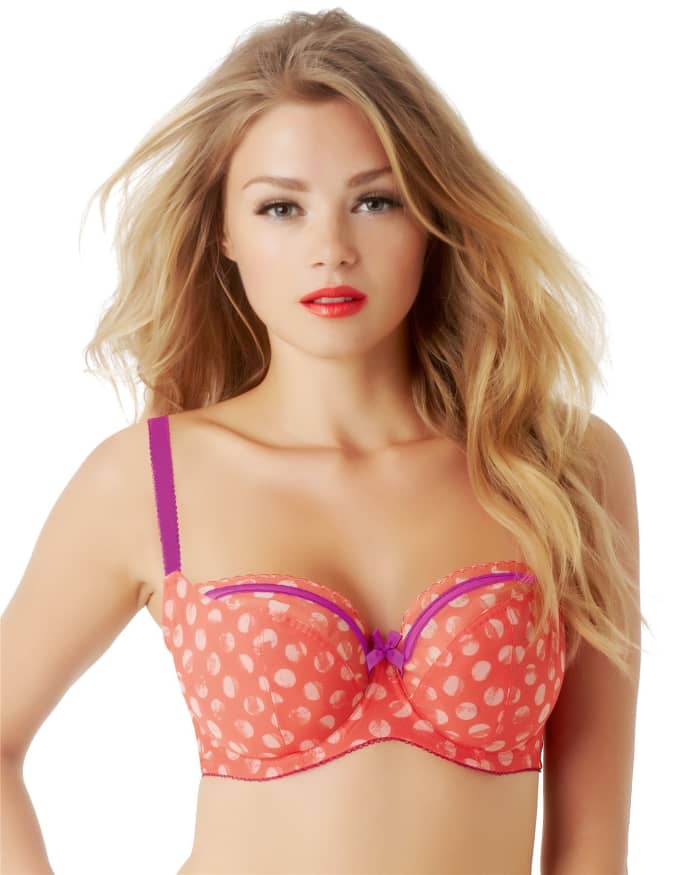
Think all larger-cup bras must be beige and boring? Cleo by Panache makes bras up to a J cup. And you can get one for less than thirty bucks.
Where Can I Find Bras In My New Size?
There are actually a ton of brands that make cups in smaller band sizes and larger cup sizes than places like Victoria's Secret. To name just a handful, bra companies like Freya, Panache, Wacoal, Natori, Chantelle, Betsey Johnson, and Jezebel make bras in a large range of sizes that fit most women.
You could order bras online directly from their retailers, from some department store websites, from speciality retailers like brastop.com, or from Amazon.com. Amazon has a huge selection of bras, many of which are available through Amazon Prime, which offers free shipping and returns, which is great for when you're still figuring out what fits you.
If you prefer to try something on in-store, research bra boutiques in your area to see what sizes they carry, or seek out a Nordstrom or its budget little sister Nordstrom Rack. Nordstrom is the best major store for larger cup sizes, and most of the people who work there know how to do a proper fitting if you want them to check you. Plus they hang your bras back up for you after you try them on, which is nice. Those hangers are tricky.
How Can I Tell If My Bra Fits?
Always look for bras that fit properly on the loosest hook, so you can use the other ones as the bra stretches with age. If the band feels too tight, turn the bra around so the cups are in the back and try it on that way. If the band feels right that way, go up a cup size. Otherwise, try a bigger band size.
This Bra Is Supposed to Be My Size. Why Doesn't it Fit?
The calculator isn't infallible! Try on the sister sizes (a cup size up and a band size down, or a band size down and a cup size up) of the size it gave you, and try the same band size but with a different cup size, too. The most important thing is that you're comfortable, even if that means you're not wearing the exact size the calculator recommends.
Most likely, though, it's just that that particular bra is wrong for you. There's a lot more to finding the right bra than just knowing your size. Breast shape plays a huge part in determining what bras fit the best, as does knowing what your personal preferences are in terms of cut and shape. This is a great guide to breast shape.
And before you judge if a bra fits you, always remember to swoop and scoop—gather ALL of your breast tissue and fit it into the cups. Reach under your arms and underneath your band and scoop everything in.
Is it Worth It?
Only you can answer that. If you're perfectly happy in your current bras, there might not be a need to switch. What you wear is no one's business but your own!
But a lot of women find that the difference in the way their bodies feel and the way their clothes look is legitimately life changing. The first time I put on a bra that fit me, I gasped.
So what do you have to lose by trying it? And remember, if you change your bra size, no one but you needs to know. But if you're like me, you'll end up preaching the "braspel" to anyone who'll listen.
More Information:
There's no better source for bra fitting information than the subreddit A Bra That Fits. They'll answer your questions, check your measurements for you, and even recommend bras they think will work!
There are a ton of great bra blogs. My favorites are A Sophisticated Pair and Bras I Hate and Love (no longer updated, sadly, but still full of good posts).
Bratabase is an awesome resource for seeing what bra sizes really look like.
And if there are any questions I can answer, let me know in the comments! Happy fitting!
Always Listen to Erica!
Comments
Liz Elias from Oakley, CA on May 25, 2018:
Very interesting. For years, and years, and years, we were told, "To correctly measure for a bra, measure yourself over a well-fitting bra!" What the heck? If the bra fit well, or wasn't worn out, I wouldn't be in the market for a new one anyway now, would I?!
Bras are my least favorite piece of clothing. I find them uncomfortable and restrictive. Plus, I despise underwire bras; they always, always, always poke me, yet, I find non-underwire ones nearly impossible to find anymore.
Not only that, bras are ridiculously expensive! I'm on a fixed income. I can't afford to spend $30+ on one undergarment. And when you buy cheap ones, well, we all know the saying about getting what you pay for. Besides, they are 'fussy' in their laundry care. Anything I can't toss in the washer and dryer, I leave in the store. I have neither the time nor the inclination to do hand-laundry.
I haven't quite taken to burning bras, but for quite a few years, now, I've stopped wearing them at all, in favor of the far more comfortable "bra-tank" style tank tops.
They have a double layer of fabric with an elastic underband in the bra area; otherwise, they look like any other summery tank top, and can be worn as outerwear...which I do in the summer. (Besides, for the price of a single 'good' bra, I can buy 3 or 4 of these tanks at KMart, and they last me for many years.)
In winter, I wear them instead of a regular bra for an extra layer of warmth.
As to 'sagging' and 'support,' pffft...I'm 70 years old. I don't give a rat's butt about that aspect.
All of that said, I did find your article very interesting, and at least for grins and giggles, I'll try out your size calculator link.
Diane on October 01, 2017:
"size 44 or 46 IS my dilemna.the cup is C
Vani on July 22, 2016:
Hi...
This was really interesting one.
I used to wear 34 size bra. But that is not comfortable to me. My breast is too large like 38 cup size. But I couldn't able to wear 38size bra. Because that was too loose and I couldn't hook it.
So shall I try minimisar bra?
What is the solution to larger breast.???
Hannah Moskowitz (author) from New York on October 20, 2014:
Snake--Totally. I couldn't believe how different my clothes looked.
Snake on October 20, 2014:
Amazing. This was a game changer.
Hannah Moskowitz (author) from New York on October 19, 2014:
Absolutely. Bratabase is a great resource for looking up specific bras--it'll show you comparisons between different bras and measurements of all the different dimensions of the bra to the centimeter. But there's no substitute for trying on.
Lynsey Hart from Lanarkshire on October 19, 2014:
Great hub, and greatly delivered. The graphics are all perfect to illustrate your points. My last check of size showed I was a 40E, but I suspect that wasn't accurate, as even the bras they tried on me doesn't fit. One thing they told me though is that there is no one size for all bras, as they are all made differently. Try before you buy! :-)
Hannah Moskowitz (author) from New York on October 19, 2014:
If you can't hook up a smaller size, yep, it absolutely sounds like you're in the right band. Luckily, 38 is a common size. Have you had trouble finding the size you need? (Also, I've got a little waist and big hips, so trust me, I understand curves!)
peachy from Home Sweet Home on October 19, 2014:
my waist size is 26 but my breastbone is large, I have to wear bra size 38 instead of 34 or 36. It seems that I can't hook up with those size.
Hannah Moskowitz (author) from New York on October 18, 2014:
Yes! Never feel bad about your size. It has nothing to do with you as a person; it's just the amount of fabric and wire that happens to make you the most comfortable.
Snakesmum on October 18, 2014:
As someone who has often had problems finding the right size bra, I found this very interesting. Now I know what to look for when I shop for my next batch of bras, and I won't feel bad about the size anymore. :-)












